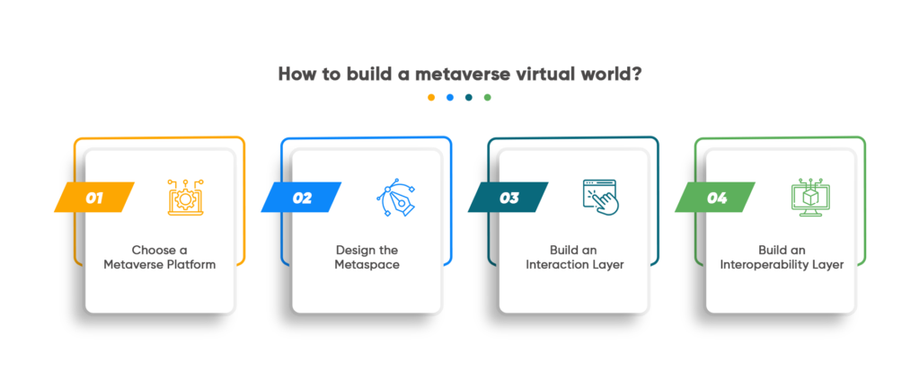The term metaverse has been blowing up the internet the past few months. The news about Facebook being renamed Meta was mixedly received with skepticism and excitement (mostly from the Matrix and Black Mirror fans). Experts define it as a new meaning to connect with people virtually that could potentially replace its equivalent in the physical world.
While the world debates over the use-case of an extravagant virtual reality, one should be looking at what Metaverse has to offer (other than holograms and pixelated street graffiti that move). The new version of the internet, Web 3.0, has given NFTs and blockchains new hope.
This article will help you understand how to build a metaverse virtual world and why a metaverse launch is needed for your business growth.
What is a metaverse?
Metaverse is an ever-existing, online, three-dimensional world of multiple virtual spaces. Day-to-day activities can be carried out online, making remote meetings, working, and entertainment more vivid. Metaverse is yet to be built in its full form, but some platforms have put out elements similar to it.
The main technologies that power the metaverse as its backbone are Virtual Reality (VR) Augmented Reality (AR), and Mixed Reality (MR). Other secondary technologies that can play a big role in the metaverse include Blockchain, DLT, and NFTs. These, along with the sensory output devices like VR goggles and headsets, give us the full metaverse experience.
How to build a metaverse virtual world?
Metaverse is complex, and the structures we build into it must support interoperability and be persistent, as synchronous as possible to the real world. It must also be secured enough for transactions, thus creating an economic base.
Step 1: Choose a metaverse platform
If you plan to launch a metaverse space or an app, you first need to choose a metaverse platform. You can choose from the metaverse platforms already launched in the market, for example, Facebook Meta. Or, you can choose to build your metaverse platform from scratch. The second option is costlier but more apt for custom metaverse requirements, especially for enterprises.
Step 2: Design the metaspace
Once you have figured out the metaverse platform, the next step is to design the metaspace. A metaspace can be an app, a virtual meeting room, a virtual conference hall, or even a virtual home theater. Metaspace is a virtual space that a user can access via a VR headset. Inside a metaspace, people can interact with the environment and other people in it.
Step 3: Build an interaction layer
The third step is to build an interaction layer so your user can interact within the metaspace you have designed. For example, a 3D model of a meeting room is useless with the option for people to interact inside it. The interaction layer defines the user controls, access criteria, navigation controls, and communication protocols between the users.
Step 4: Build an interoperability layer
Interoperability standards enable the operational processes to support the exchange and sharing of information between different systems. The goal of interoperability is to access and use data and digital objects autonomously by humans and machines. Interoperability standards are a common language set of common expectations that enable interoperability between two parties.
Conclusion
One common worry about the metaverse is its safety and the fear of leaking identities and privacy. It is too early to find user bugs as the metaverse is still being built. Presently, the metaverse is as safe as its foundation or the blockchain it is being built on. Hacking and tampering can still occur, but enough trust has been gained after witnessing cryptocurrencies reassuring the power and reliability of decentralization.
Do you want to build a metaverse for your company or project and don’t know where to start?
Contact us today!

